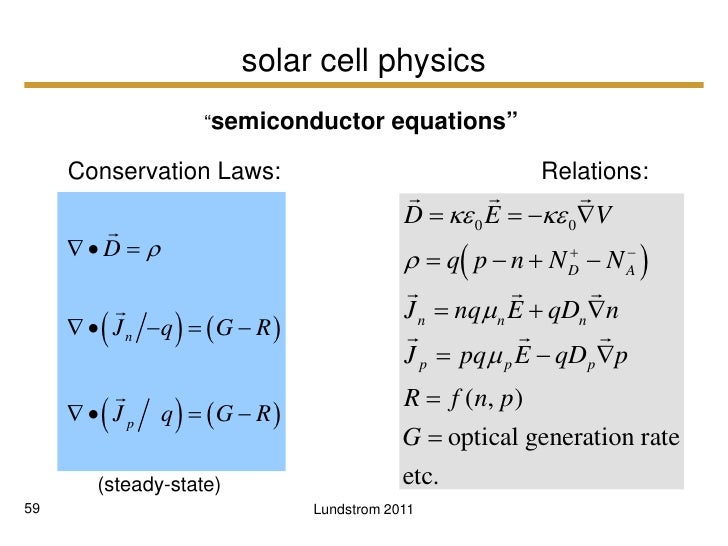

Furthermore, it is also due to the fact that the part of the energy of the absorbed photons in excess of the band gap is lost as heat. The limitations considered in the ultimate efficiency are due to the fact that the simplest semiconductor (i.e., one whose defects and impurities can be ignored) cannot absorb below-band-gap photons. The model will be used to derive the so-called solar cell equation, which is a widely used relation between the electric current density I leaving the solar.

By virtue of the large distance between the sun and earth, the radiative energy incident on Earth's surface is less than that of Equation. The most common types of solar cells are based on the photovoltaic effect, which occurs when light falling on a two-layer semiconductor material produces. The ultimate efficiency was based on the blackbody photon flux, a rigorous thermodynamic quantity but not a very good estimate of the solar spectrum as seen on Earth. Solar cells convert light energy into electrical energy either indirectly by first converting it into heat, or through a direct process known as the photovoltaic effect. A further step in finding the appropriate efficiency limits for single junction solar cells can be made by estimating the relevant terms in the Shockley ideal solar cell equation. In the case of a 2-D metal/dielectric interface, the dispersion relation becomes:1 (1-1) where k,, and c are wavevector, angular frequency, and light velocity, respectively, and d and m are the frequency-dependent permittivity of dielectric materials and metal, respectively. The formulae for ideal efficiencies of solar cells are simplest when based on purely thermodynamic arguments. plasmons can be obtained by solving Maxwell’s equations. This chapter deals with solar cell efficiencies from a theoretical point of view.
SOLARCELL EQUATIONS SERIES
An equation for the FF as a function of series resistance can be determined. Landsberg, Tom Markvart, in Practical Handbook of Photovoltaics (Second Edition), 2012 Publisher Summary Resistive effects in solar cells reduce the efficiency of the solar cell by.


 0 kommentar(er)
0 kommentar(er)
